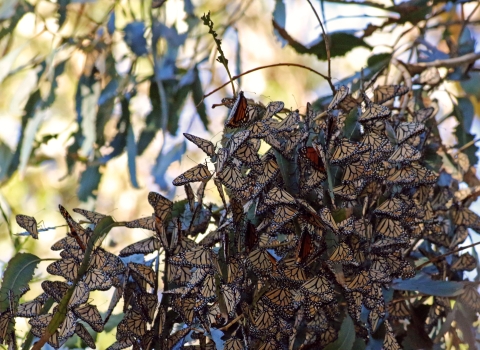Wildland firefighters often work in remote areas far from emergency medical services. Although it is not the primary mission of the South Central Valley (SCV) fire crew to assist with medical calls, the crew does sometimes find themselves as first responders. To prepare, each year, the SCV fire crew and refuge personnel train for such medical emergencies.
The SCV Fire Management Zone is stationed at the San Luis National Wildlife Refuge Complex in Los Banos, California. The SCV fire crew responds to a variety of incidents including hazardous fuels reduction projects, large wildfires, prescribed fires, initial attack on local wildfires, traffic accidents, among other requests for assistance.
When responding to calls, it is not uncommon to encounter someone in need of medical attention. That person could be a refuge visitor, a fellow firefighter, a coworker or even a family member.
In early 2023, the National Wildfire Coordinating Group (NWCG) adopted new medical training guidelines for wildland firefighters. The new training requirement was in response to the Dutch Creek Incident when a young firefighter lost his life after being struck by a falling tree.
The Dutch Creek Incident investigation revealed gaps in required medical training for wildland firefighters. As a result, new medical training guidelines were proposed and adopted. Recommended changes include improvements to lessons in injury severity assessments, radio communication during medical situations, treating heat related illnesses, patient extraction and patient transportation options for rural settings.
In response to these medical training improvements, the SCV fire crew conducted a scenario-based field training to better prepare for future medical emergencies.
The class was taught by Engine Captain and acting Assistant Fire Management Officer, Ron Sandling, and Merced City Fire Department Battalion Chief, Mickey Brunelli, who also serves as a Medical Unit Leader on an Incident Management Team in California. The students included SCV firefighters and other refuge staff with collateral-duty training in firefighting. A range of medical experience was represented in the group, from basic CPR knowledge to Emergency Medical Technician (EMT) credentials.
The class began with a morning session covering patient triage, how to properly call in a medical report, managing an incident within an incident (e.g. an injury or other accident that occurs during a wildfire response), heat illness and other medical situations that may be encountered during a wildfire.
Next, the students tested their knowledge in a field scenario. Students were formed into a crew, placed into two squads and sent to respond to a mock wildfire. As the squads began hiking to the mock wildfire, they were diverted to a mock medical call—a firefighter struck by a falling tree. The squads worked together to triage the patient, render appropriate aid, devise and implement an extraction plan for the injured firefighter and locate an appropriate landing zone for a helicopter. While in the process of carrying out their extraction plan, a plot twist occurred—one of their own became incapacitated with a mock heat related illness. Although the stress of multiple medical incidents was clear, the crew successfully adapted and managed the scenario.
The practice situation allowed for students to experience firsthand how to appropriately respond to an incident within an incident. The experience showed students how a good leader paused to assess the situation before taking command and delegating tasks, how vital clear communication is and that moving an injured person over rough terrain is more difficult and requires more assistance than expected!
The training will benefit staff not only during wildfire response, but as they do field work in any remote area. The class equipped staff to handle medical emergencies in a timely and organized way—preparing them with valuable, life-saving skills that are sometimes necessary when on the fireline.



